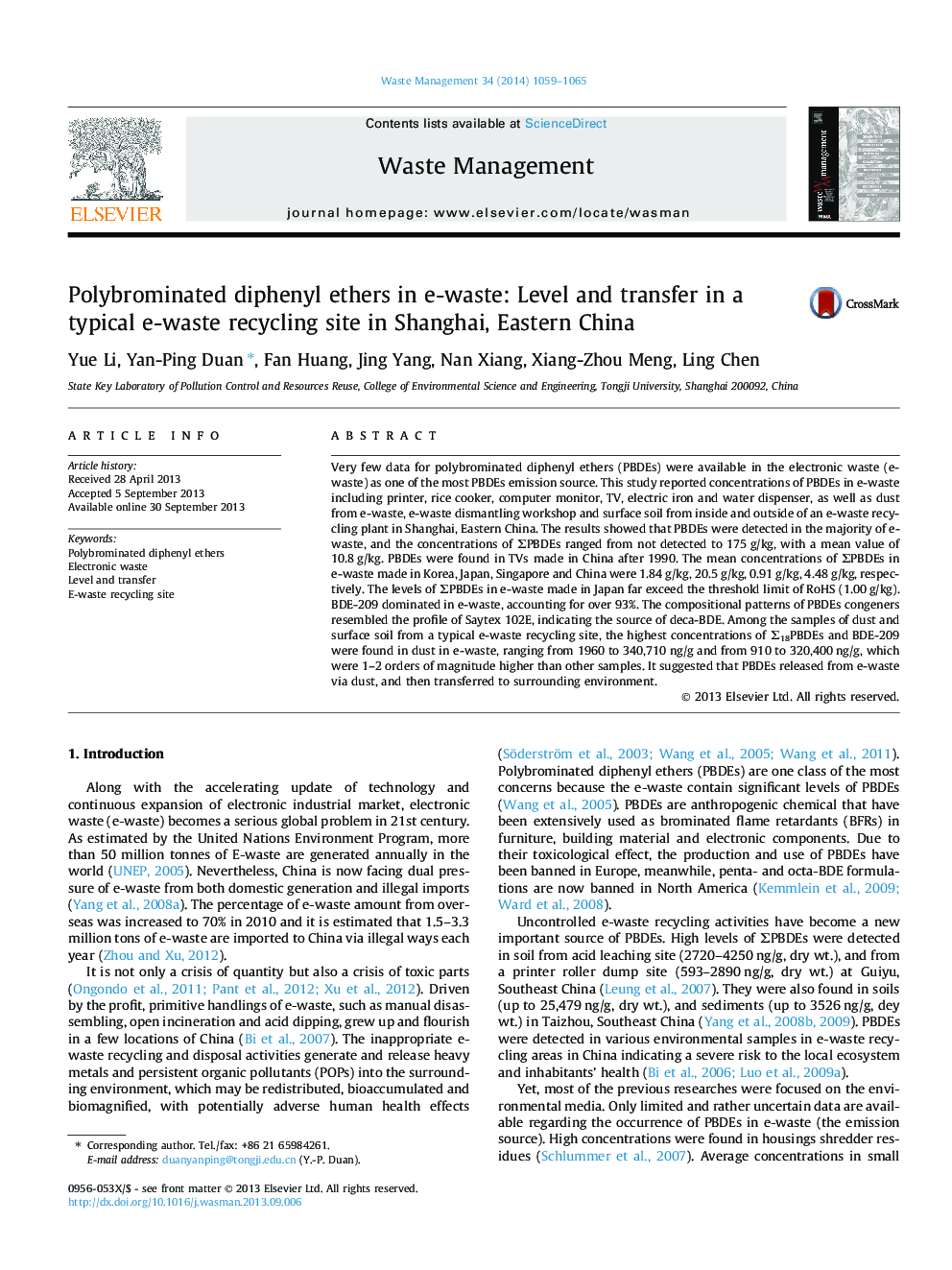| Article ID | Journal | Published Year | Pages | File Type |
|---|---|---|---|---|
| 4471629 | Waste Management | 2014 | 7 Pages |
•PBDEs were detected in the majority of e-waste.•PBDEs were found in TVs made in China after 1990.•The levels of ΣPBDEs in e-waste made in Japan far exceed the threshold limit of RoHS.•The inappropriate recycling and disposal of e-waste is an important source of PBDEs.
Very few data for polybrominated diphenyl ethers (PBDEs) were available in the electronic waste (e-waste) as one of the most PBDEs emission source. This study reported concentrations of PBDEs in e-waste including printer, rice cooker, computer monitor, TV, electric iron and water dispenser, as well as dust from e-waste, e-waste dismantling workshop and surface soil from inside and outside of an e-waste recycling plant in Shanghai, Eastern China. The results showed that PBDEs were detected in the majority of e-waste, and the concentrations of ΣPBDEs ranged from not detected to 175 g/kg, with a mean value of 10.8 g/kg. PBDEs were found in TVs made in China after 1990. The mean concentrations of ΣPBDEs in e-waste made in Korea, Japan, Singapore and China were 1.84 g/kg, 20.5 g/kg, 0.91 g/kg, 4.48 g/kg, respectively. The levels of ΣPBDEs in e-waste made in Japan far exceed the threshold limit of RoHS (1.00 g/kg). BDE-209 dominated in e-waste, accounting for over 93%. The compositional patterns of PBDEs congeners resembled the profile of Saytex 102E, indicating the source of deca-BDE. Among the samples of dust and surface soil from a typical e-waste recycling site, the highest concentrations of Σ18PBDEs and BDE-209 were found in dust in e-waste, ranging from 1960 to 340,710 ng/g and from 910 to 320,400 ng/g, which were 1–2 orders of magnitude higher than other samples. It suggested that PBDEs released from e-waste via dust, and then transferred to surrounding environment.
